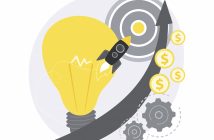Did you know that the European Union (EU) has been supporting individual researchers and their consortia since the early 1980s? That’s right, the EU has been dedicated to this effort for more than 40 years. How? With different funding opportunities available under “framework programmes for research and innovation”.
The EU introduces a new framework programme every seven years. The current framework programme Horizon 2020 (H2020) was launched in 2014. It has a budget of €80 billion, which marks it as the biggest programme for research and innovation in the EU. But the EU had even greater plans for its successor, known as Horizon Europe which should replace H2020 from January 2021.
European Commission proposed Horizon Europe or the 9th Framework Programme in June 2018, planning a €100 billion budget for it. The proposal was endorsed by the European Parliament and European Council in April 2019, but is facing an uncertain financial future since then. The Horizon Europe budget is a part of the EU’s Multiannual Financial Framework (MFF), i.e. its long-term-budget for the period between 2021-2027. The EU is still negotiating the next MFF, which has been affected by the COVID-19 pandemic and Brexit.
Still, Horizon Europe has been presented as “the most ambitious research and innovation programme ever that will keep the EU at the forefront of global research and innovation”. It has several objectives: to strengthen the EU’s scientific and technological infrastructure and European Research Area (ERA), to increase innovation scope, competitiveness and the number of job offers in Europe, and to fulfill citizens’ priorities, while maintaining socioeconomic models and value.
“Evolution, not revolution”
If you are already familiar with the H2020 programme, the structure of Horizon Europe won’t surprise you. Jean-Eric Paquet, the EU’s Director for Research and Innovation, stressed how the Horizon Europe programme is based on Pascal Lamy’s mantra: “Evolution, not revolution” from his report on the H2020. Horizon Europe is based on the good practices from H2020, meaning that the three pillar base will stay the same, as well as the rules and procedures for funding.
The name of the first pillar changes from the Excellent Science in H2020 to the Open Science in Horizon Europe, the first the Open Science pillar. It means that the European Research Council (ERC) and the Marie Skłodowska-Curie fellowships and exchange will remain as means of driving scientific excellence.
Marie Skłodowska-Curie Actions (MSCA) supports research training activities for individual researchers of any nationality, at any stage of career in any discipline. Funding is available for individual fellowships, innovative training networks, research and staff exchange, doctoral and fellowship programmes. This is an example of a so-called mono beneficiary action, where one entity is accountable for the implementation of the action.
Consortia of research organisations should look at funding opportunities from multi-beneficiary actions that support group projects. Usually they are formed from different EU and associated countries, meaning that there are several entities responsible for the same matter.
Global Challenges and Industrial Competitiveness is the name of a second pillar in Horizon Europe, previously known as Industrial Leadership in H2020. The Joint Research Centre (JRC) will continue to be the place for scientific advice and technical support under the second pillar. But here we will see one of the novelties in Horizon Europe: five new mission areas. They are explained as a series of actions with quantitative goals within a defined time period and should be of significant importance for science, technology and society.
European Innovation Council
The European Innovation Council (EIC) was already presented as a pilot project and should be fully operational in Horizon Europe, complementing the European Institute of Innovation and Technology (EIT).
The EIC is directly supporting innovators through two integral funding instruments: Pathfinder and Accelerator. The first one is imagined as a science-driven inspection engine for essentially new technologies. It should boost collaborative, interdisciplinary research and innovation on such technologies, aiming at consortia of minimum three entities from three different EU member states and associated countries.
Pathfinder is established on Future and Emerging Technologies (FET) Open and FET Proactive schemes from the H2020 programme. FET Open covers all topics and research areas, but its focus is on early stages of research that fit into its “gatekeepers”: radical vision, breakthrough technological target and challenging interdisciplinary research. Small to medium enterprises (SMEs) should particularly benefit from this funding instrument which opens up possibilities of networking, coaching and mentoring.
Accelerator, as EIC’s second instrument, will provide grants and “blended finance” for development and market deployment for high-risk, high-potential innovative SMEs, who are eager to develop and commercialise new products or services and business models. It will provide SMEs with full-cycle business innovation support, as well as with mentoring and coaching.
Also read: How to write a winning grant proposal – An expert guide
More opportunities, more equity
Horizon Europe should support Eastern European countries with funds twice as big in H2020 amount to capitalize their national research and innovation capability. It should also extend association possibilities, making sure that third countries with good science, technology and innovation capacity are more eligible for international participation.
Horizon Europe defines three new types of European partnerships for achieving better collaborations: Co-programmed European Partnerships, Co-funded European Partnerships and Institutionalised European Partnerships.
It will also promote links with other future EU programmes, including Cohesion Policy and the Digital Europe Programme. One of the most emphasised parts of Horizon Europe is the Open Science and open access policy, supported by the use of European Open Science Cloud. Horizon Europe also sets better distribution and exploitation of R&I results to society as a way of creating more engaged and active Europeans.
What is happening with Horizon Europe’s budget?
Even before Brexit happened and the world was paralyzed by the COVID-19 outbreak, a lot of scientists and researchers across the EU started advocating for a bigger budget for Horizon Europe. They say that to keep the excellence and drive better research and innovation, they need at least €120 billion. One of the first and most vocal initiatives for a bigger budget is the Initiative for Science in Europe. Their petition has more than 4000 signatories and support from more than 100 organisations.
Because the budget for Horizon Europe depends on the next MFF, which also has to be unanimously agreed by the European Council and approved by the European Parliament, we still don’t know how the money will be allocated to each instrument and especially for missions. It is also still unknown how the EU’s coronavirus rescue fund, which is proposed as a part of the MFF, will affect the budget for Horizon Europe.
We still need to see how and with which money should Horizon Europe keep the EU on the frontline of global research and innovation. It was imagined that it will:
- Improve the good features of H2020 by encouraging collaboration and offering more specific partnership possibilities
- Apply the Open Science policies to make R&I results more visible, for scientists and citizens
- Tackle specific problems in five mission areas, constantly raising public awareness on those issues
- Distribute funds more equally, meaning that the underdeveloped countries and third countries should be more eligible to apply for calls
More details about Horizon Europe and the novelties compared to Horizon 2020 in the article “Horizon Europe: introducing the EU’s new framework programme”.







